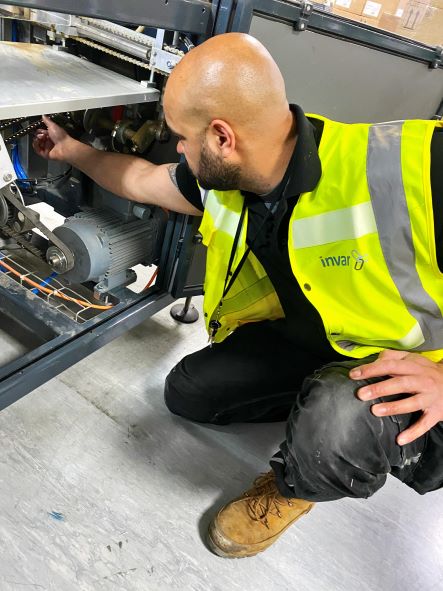The EX Monitoring App from Linde Material Handling notifies drivers of explosion-protected industrial trucks about the status of safety-relevant parameters and supports service technicians in diagnostics and repairs. The advantages for operators include a higher level of comfort, increased transparency, time savings and even better availability of vehicles during operations.
In order to avoid ignition sources that could lead to explosions in a potentially explosive atmosphere, the ATEX directive requires the consistent monitoring of defined, safety-relevant parameters when operating industrial trucks. Linde MH has developed its EX Monitoring App to enable the continuous monitoring of such values: It ensures maximum vehicle availability by displaying safety-relevant values and errors and providing concrete recommendations for action.
The app supports forklift drivers and fleet managers in operating the vehicle as safe and failure-free as possible. At the same time, it simplifies maintenance, diagnosis and repair.
“This makes the operation of explosion-protected vehicles in sensitive areas even more productive,” summarizes Elke Karnarski, the product manager responsible for explosion-protected Linde industrial trucks and solutions.
Many areas of the chemical, pharmaceutical, cosmetics, food and beverage industries, as well as logistics, are vulnerable to explosions because hazardous materials are manufactured, processed, transported and stored in such areas. Here, it is essential to eliminate any ignition sources that could cause an explosion with devastating consequences.
Industrial trucks are found in ATEX zones 1/21 and 2/22 – these include, for example, areas of production where hazardous materials are openly mixed or transferred into other containers, as well as areas where hazardous materials are stored and transported in closed containers and can be released in the event of an accident or collision. When gases or dusts combine with oxygen in ambient air, this can create an explosive atmosphere. Ignition sources on vehicles can be avoided by means of appropriate explosion-proof equipment as well as the consistent monitoring of safety-relevant parameters – which encompass up to 50 values in an explosion-protected vehicle, primarily temperature-relevant parameters, resistance values, voltages and wear.
These include the temperature of the housings of electronic control units and power modules, brake shoes, magnetic brakes and the traction motor. Up to now, it has been common practice to inform the driver of safety-critical faults by means of a flash code on the vehicle display. In everyday operation, however, the identification and handling of faults is not always carried out as it should be. With varying consequences – sometimes the vehicle remains out of service longer than necessary. Often the fault is not checked thoroughly enough. And sometimes even a visit by a service technician is inefficient because it could not be adequately prepared.
Linde’s EX Monitoring App offers a solution. It provides drivers and fleet managers in ATEX zones 1/21 or 2/22 with comprehensive condition monitoring information. The app checks the explosion-protected vehicle on the spot and shows what needs to be done in each specific case. It explains the meaning of the flash code and identifies the specific error.
The integrated two-stage traffic light system lays out the next steps simply and unambiguously: A yellow indicator signifies that the vehicle should be cooled down and a maintenance appointment made. If the light is red, it’s time to stop immediately and call a service technician! Additional assistance is provided by means of the detailed diagnostic function which indicates all values of the monitored components and parameters.
The app also displays the error history and provides specific recommendations for action. Thus, all details regarding the wear of safety-critical components and the remaining operating hours are recorded.
The EX Monitoring App from Linde MH is a USP. Already available for five series, it will be part of all future explosion-protected Linde industrial truck models.






